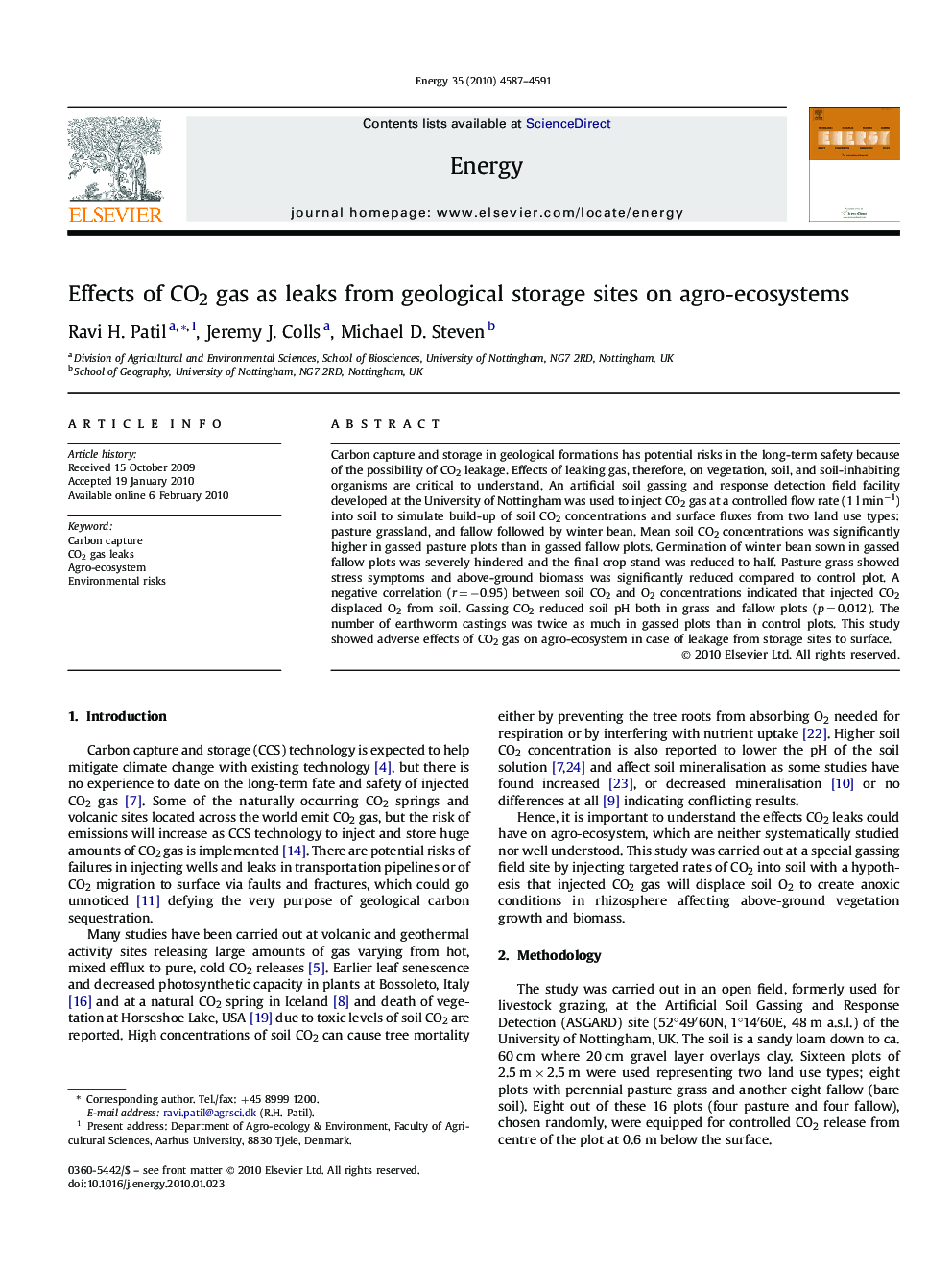| Article ID | Journal | Published Year | Pages | File Type |
|---|---|---|---|---|
| 10682743 | Energy | 2010 | 5 Pages |
Abstract
Carbon capture and storage in geological formations has potential risks in the long-term safety because of the possibility of CO2 leakage. Effects of leaking gas, therefore, on vegetation, soil, and soil-inhabiting organisms are critical to understand. An artificial soil gassing and response detection field facility developed at the University of Nottingham was used to inject CO2 gas at a controlled flow rate (1 l minâ1) into soil to simulate build-up of soil CO2 concentrations and surface fluxes from two land use types: pasture grassland, and fallow followed by winter bean. Mean soil CO2 concentrations was significantly higher in gassed pasture plots than in gassed fallow plots. Germination of winter bean sown in gassed fallow plots was severely hindered and the final crop stand was reduced to half. Pasture grass showed stress symptoms and above-ground biomass was significantly reduced compared to control plot. A negative correlation (r = â0.95) between soil CO2 and O2 concentrations indicated that injected CO2 displaced O2 from soil. Gassing CO2 reduced soil pH both in grass and fallow plots (p = 0.012). The number of earthworm castings was twice as much in gassed plots than in control plots. This study showed adverse effects of CO2 gas on agro-ecosystem in case of leakage from storage sites to surface.
Related Topics
Physical Sciences and Engineering
Energy
Energy (General)
Authors
Ravi H. Patil, Jeremy J. Colls, Michael D. Steven,
